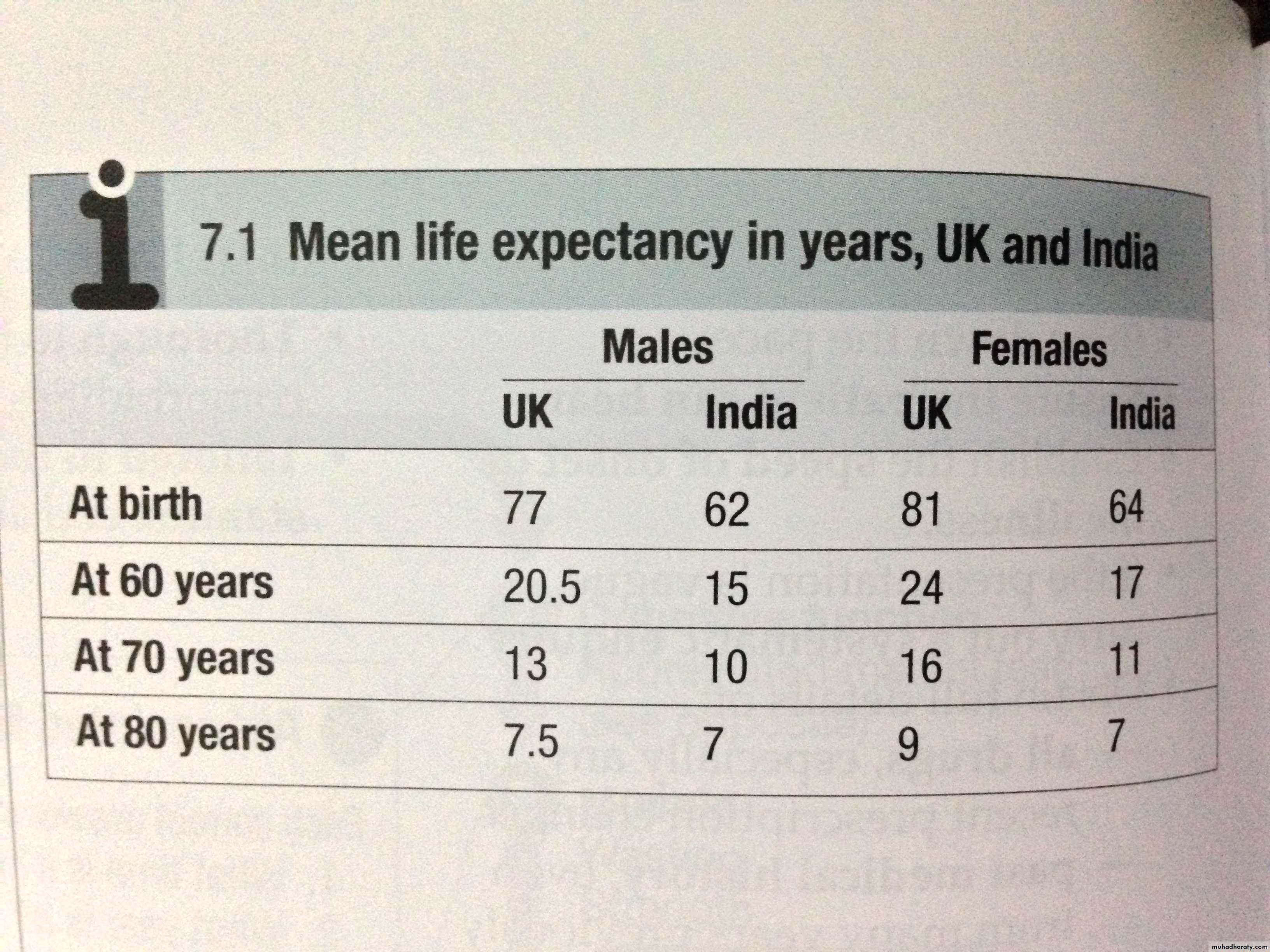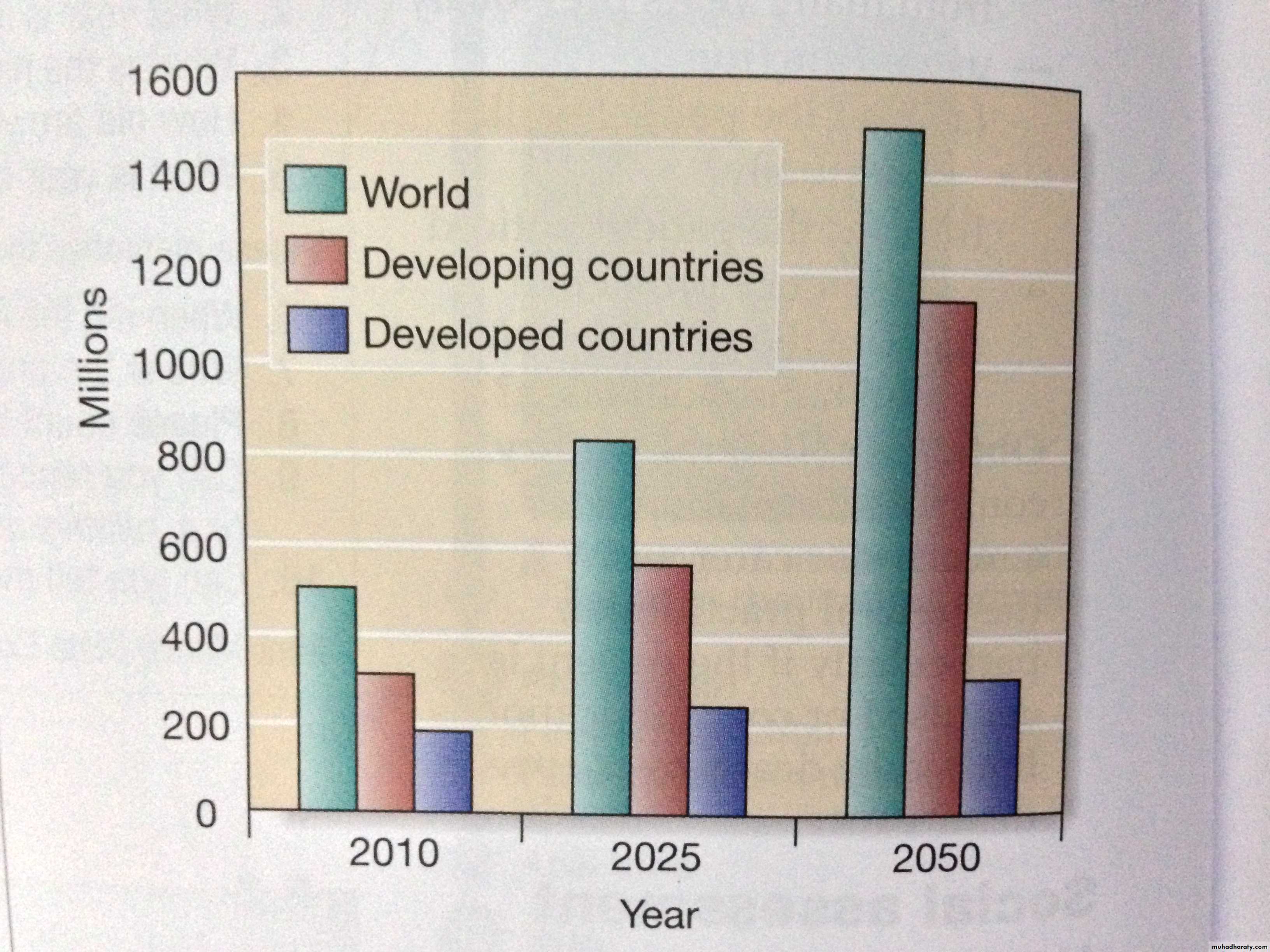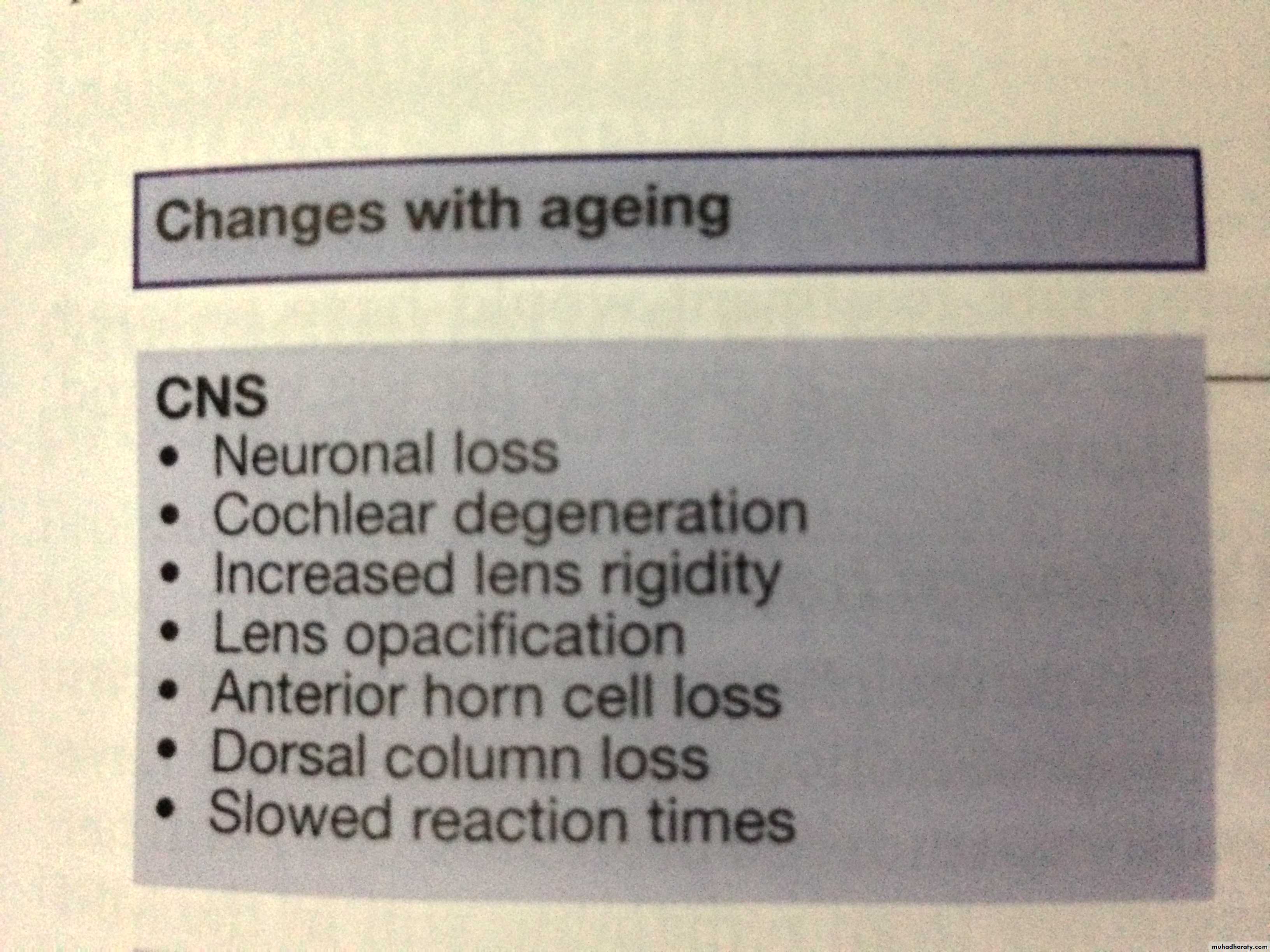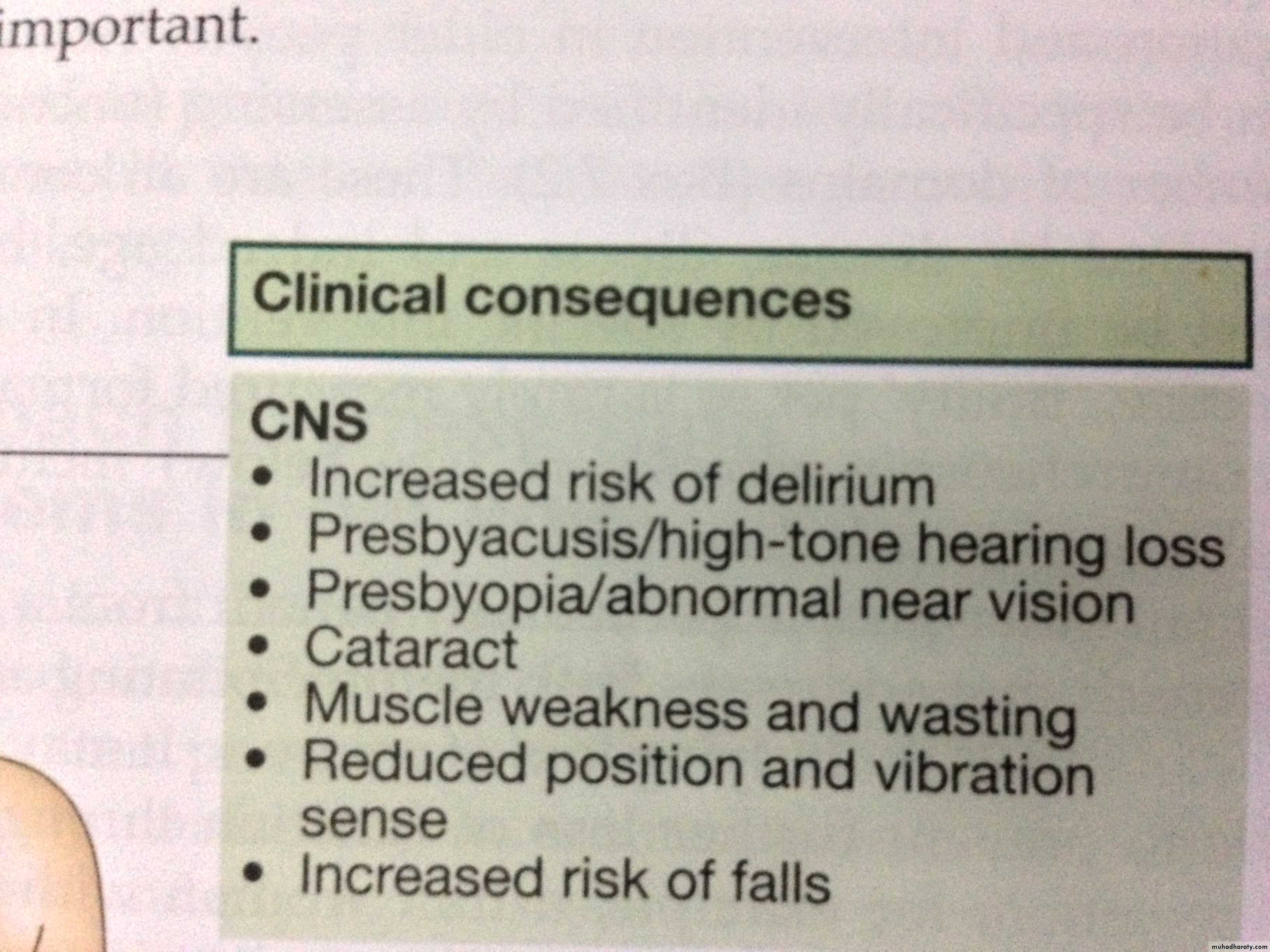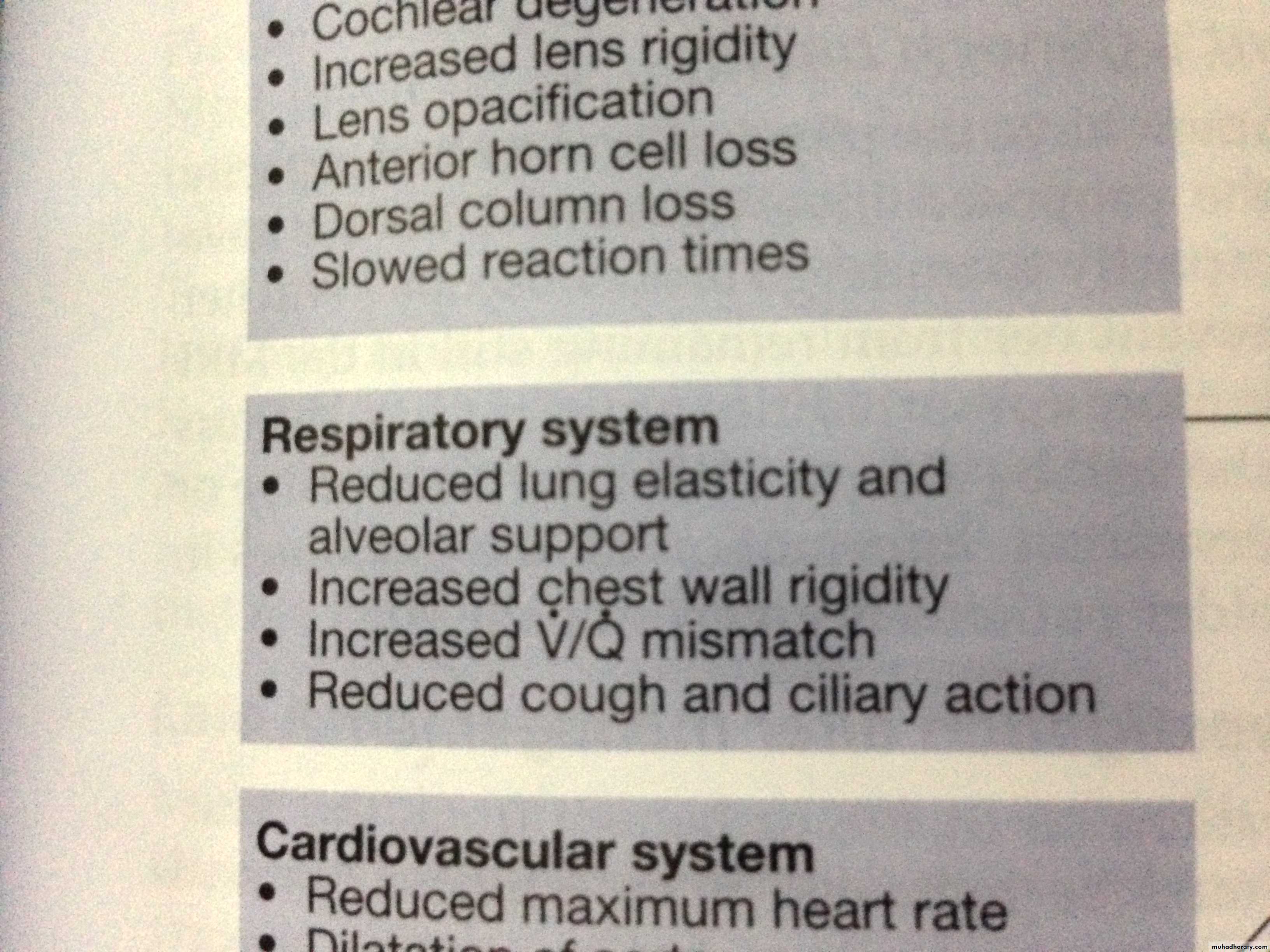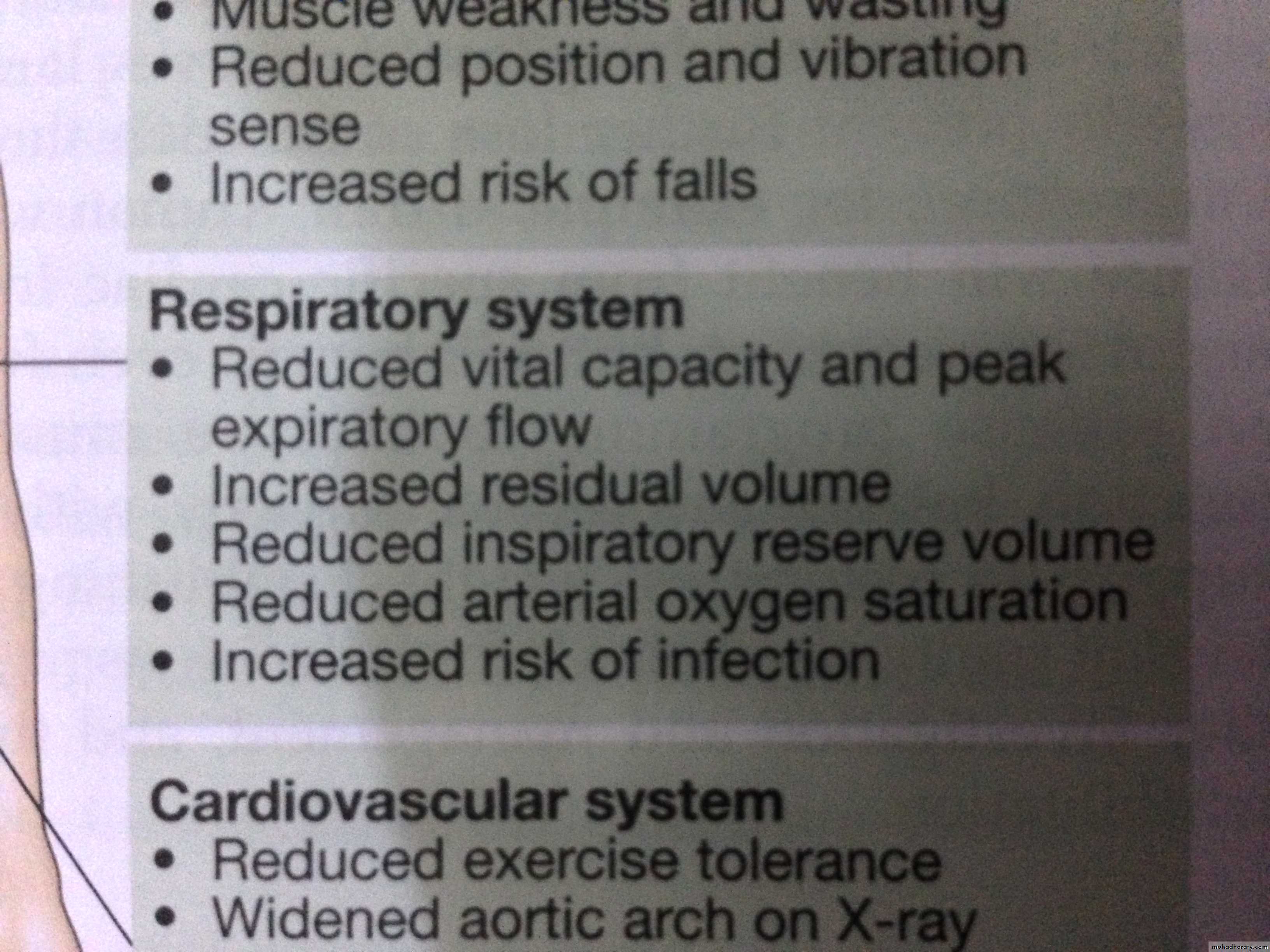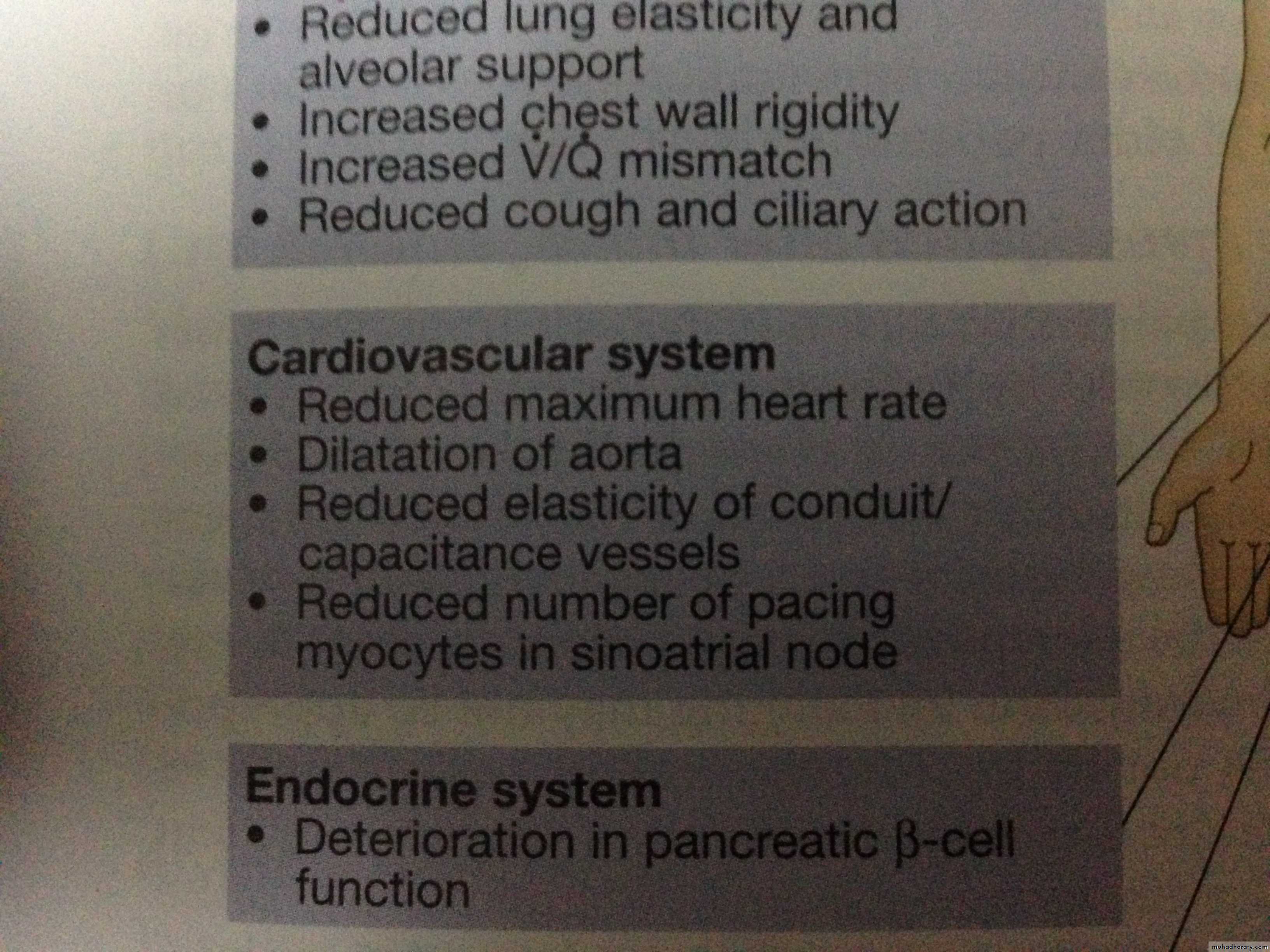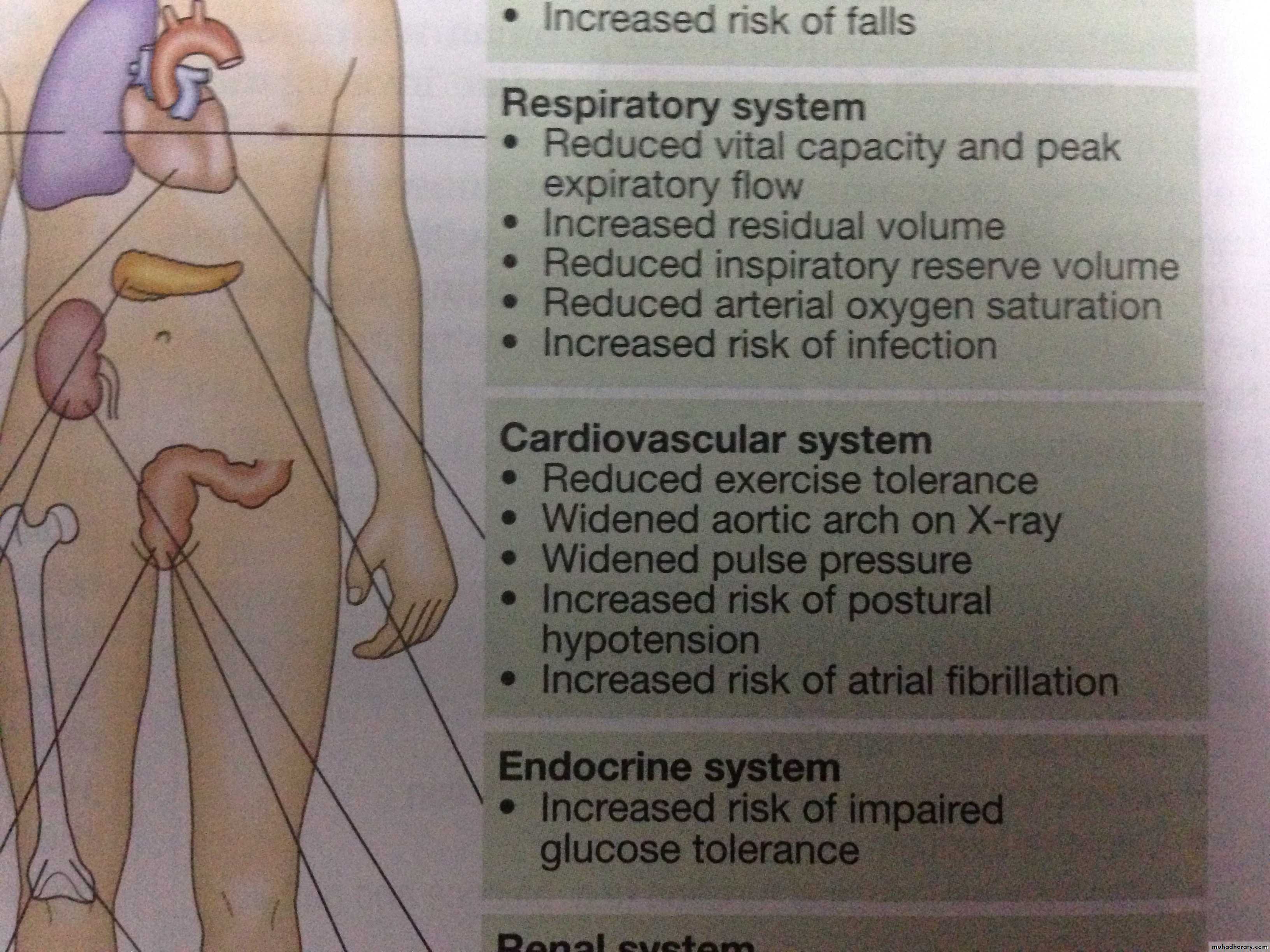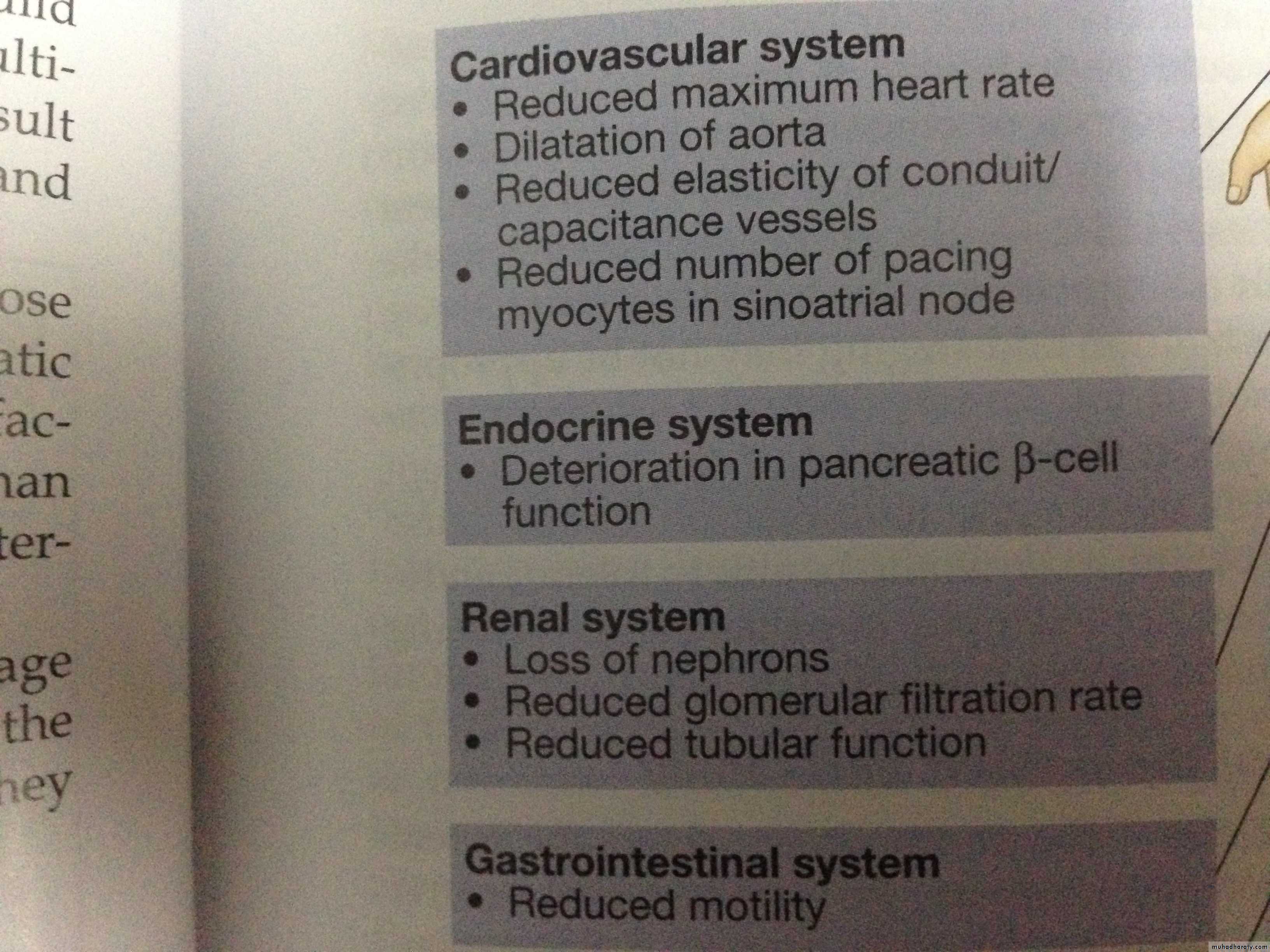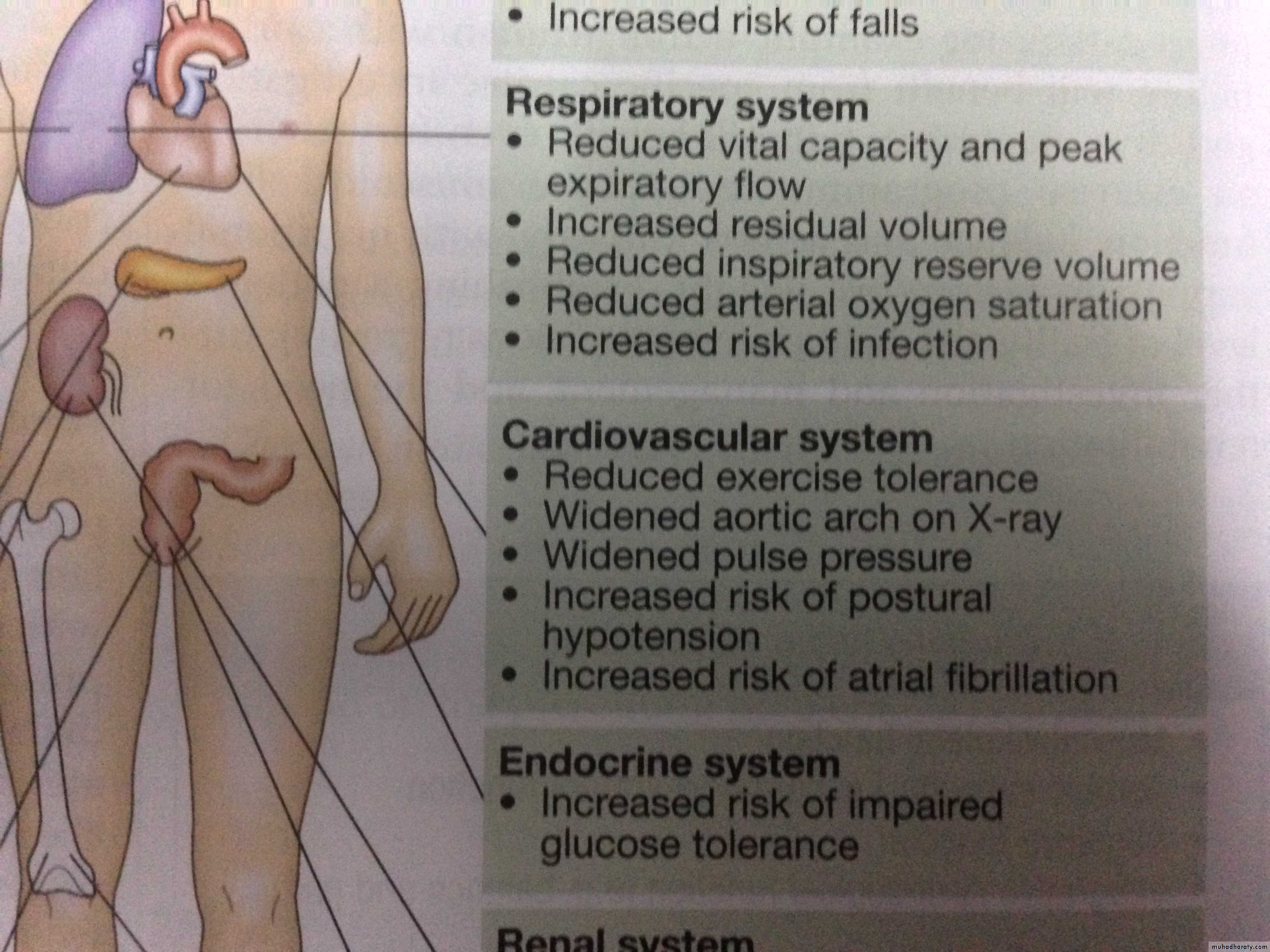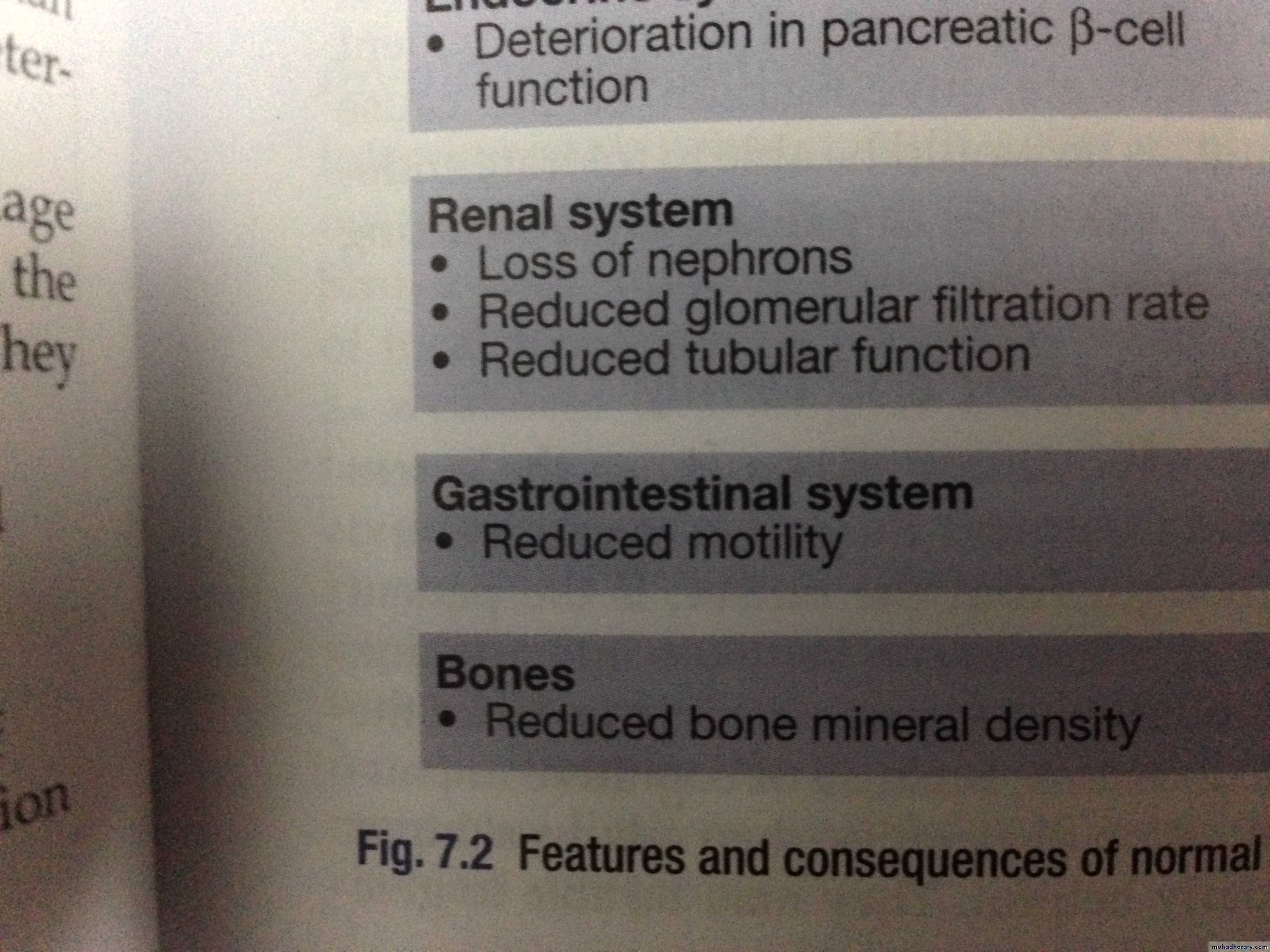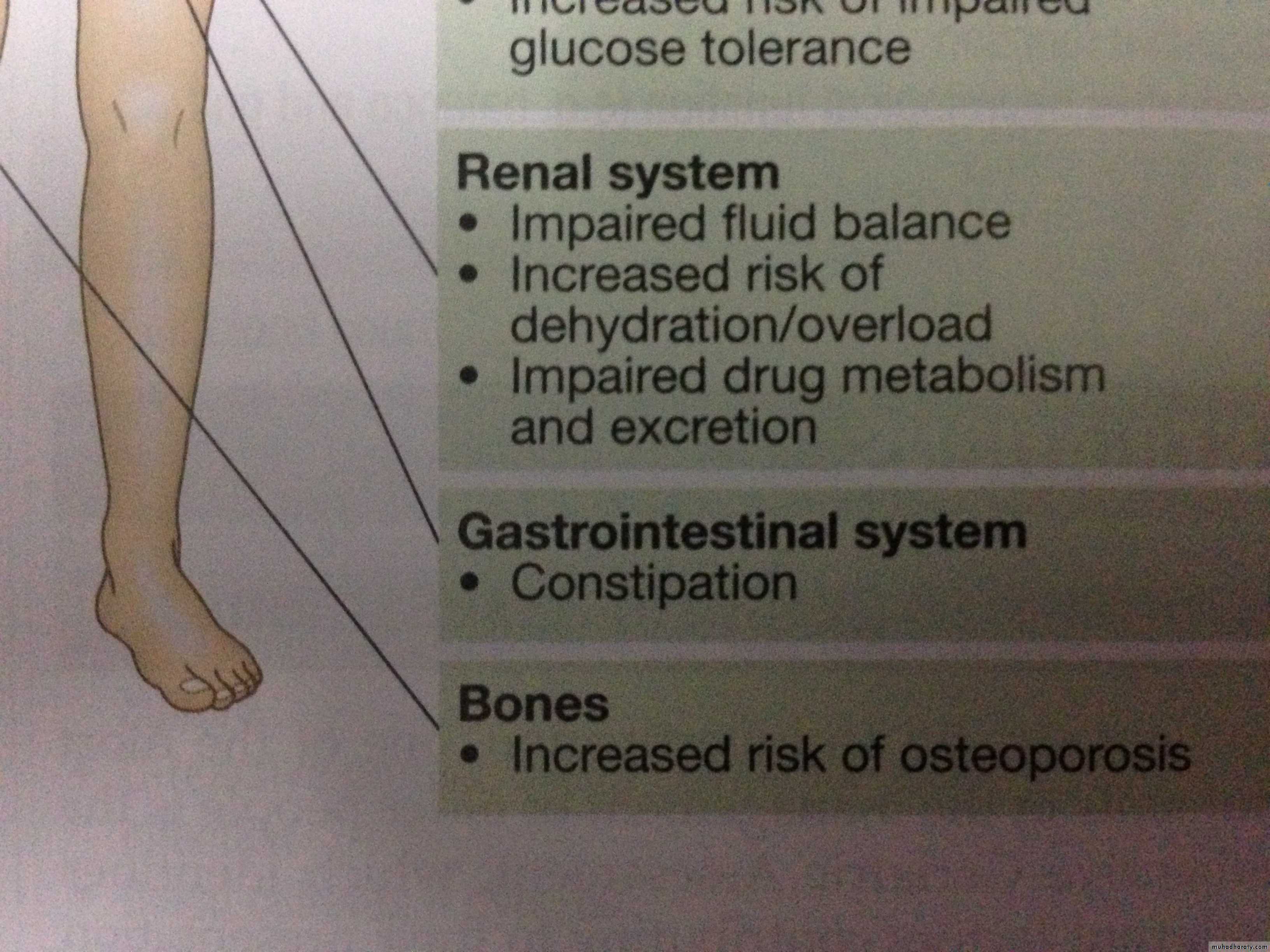Geriatric Medicine
Geriatric medicine is concerned particularly with frail older people, in whom physiological capacity is so reduced that they are incapacitated by even minor illness. They frequently have multiple comorbidities, and acute illness may present in non-specific ways, such as confusion falls, or loss of mobility and day-to-day functioning. These patients are prone to adverse drug reactions, partly because of polypharmacy and partly because of age-related changes in responses to drugs and their elimination. Disability is common, but patient function can often improved by the interventions of the multidisciplinary teamDemography
The demography of developed countries has changed rapidly in recent decades.Life expectancy in the developed world is now prolonged, even in old age. Figure ( 1 ).
Demography
Women aged 80 years can expect to live for a further 9 years. However, rates of disability and chronic illness rise sharply with ageing and have a major impact on health and social services. In the UK, the reported prevalence of a chronic illness or disability sufficient to restrict activates is around 25% in those aged 50-64, but 66% in men and 75% in women aged over 85.Although the proportion of the population aged over 65 years is greater in developed countries, two-third of the world population of people aged over 65 live in developing countries at present, and this is projected to rise to 75% in 2025.
Demography
The rate of population ageing is much faster in developing countries Fig.( 2 ) so they have less time to adjust to its impact.BIOLOGY OF AGEING
Ageing can be defined as a progressive accumulation through life of random molecular defects that build up within tissues and cells. Eventually, despite multiple repair and maintenance mechanisms, these result in age-related functional impairment of tissues and organs.Many genes probably contribute to ageing, with those that determine durability and maintenance of somatic cell lines particularly important. However, genetic factors only account for around 25% of variance in human lifespan; nutritional and environmental factors determine the rest.

